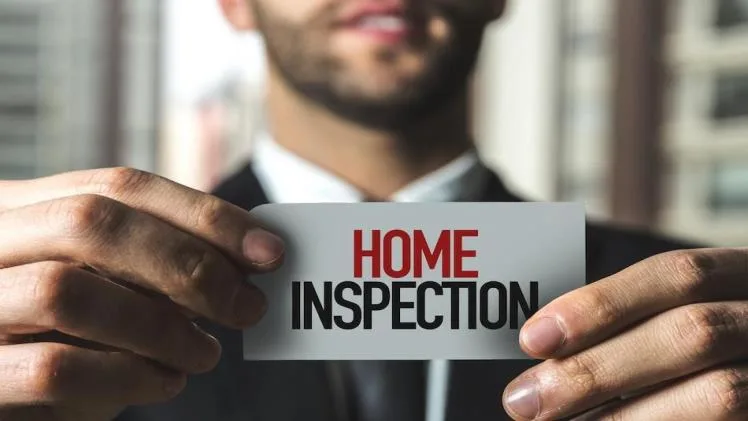Purchasing a home is a significant milestone in one’s life, representing both a financial investment and a place to create lasting memories. However, before finalizing this crucial decision, conducting a comprehensive home inspection is paramount. A home inspection is a detailed evaluation of a property’s condition, providing potential buyers with essential insights into its structural integrity, safety features, and overall functionality. In this article, we will delve into the comprehensive home inspection process to shed light on what buyers can expect.
1. Selecting a Qualified Home Inspector
The first step in the home inspection services is finding a qualified and reputable home inspector. It’s essential to choose an inspector with the appropriate certifications, experience, and expertise to ensure a thorough examination of the property. Buyers can ask for recommendations from their real estate agent or conduct independent research to find a certified inspector.
2. Scheduling the Home Inspection
Once a qualified inspector is selected, the next step is to schedule the home inspection. This typically occurs after an initial offer has been made and accepted on the property. The timing is crucial to allow for the inspection period within the due diligence period outlined in the purchase agreement.
3. The Walk-Through and Preliminary Assessment
On the day of the inspection, the inspector will conduct a walk-through of the property, accompanied by the potential buyer. During this walk-through, the inspector will provide a preliminary assessment of the property, highlighting any visible concerns or areas of interest.
4. Exterior Inspection
The inspector begins with an examination of the exterior of the property. This includes assessing the condition of the roof, gutters, downspouts, siding, windows, doors, foundation, and landscaping. The goal is to identify any signs of damage, wear and tear, or potential structural issues.
5. Interior Inspection
Next, the inspector moves inside to evaluate the interior of the property. This involves examining the walls, ceilings, floors, doors, and windows in each room. The inspector will also check for signs of water damage, leaks, mold, pest infestations, and the general condition of the interior spaces.
6. Plumbing Inspection
The plumbing system is a critical component of any home. Inspectors will assess the plumbing fixtures, such as sinks, toilets, showers, and bathtubs, for proper functionality and signs of leaks. Additionally, they will check the water pressure and drainage systems to ensure they are in good condition.
7. Electrical Inspection
Inspectors will thoroughly evaluate the electrical system, including the electrical panel, wiring, outlets, light switches, and fixtures. They’ll ensure that the electrical system is safe, up to code, and capable of handling the home’s electrical needs.
8. HVAC Systems Inspection
The heating, ventilation, and air conditioning (HVAC) systems are assessed for proper functioning and efficiency. Inspectors will inspect furnaces, air conditioners, vents, and ductwork to ensure they are in good condition and adequately distribute air throughout the property.
9. Attic and Crawlspace Inspection
Inspectors will carefully examine the attic and crawlspace areas, if accessible, to assess insulation, ventilation, and the overall condition of these often-overlooked spaces. Any signs of leaks, mold, or pest infestations will be noted.
10. Appliance Inspection
The inspector will assess the functionality of major appliances included with the property, such as stoves, ovens, refrigerators, dishwashers, and laundry machines, to ensure they operate correctly.
11. Structural Assessment
A critical aspect of the inspection is assessing the structural elements of the property, including the foundation, load-bearing walls, roof structure, and flooring. The inspector will look for signs of damage, deterioration, or potential safety hazards.
12. Documenting Findings and Generating a Report
Following the inspection, the home inspector will compile all findings into a comprehensive report. This report will detail the condition of each area inspected, highlight any issues or concerns, and often include photographs for clarity. Buyers will receive this report to help them make informed decisions about proceeding with the purchase.
13. Reviewing the Inspection Report
Buyers should carefully review the inspection report and seek clarification from the inspector if needed. The report will serve as a valuable reference when negotiating repairs or adjustments with the seller.
14. Negotiating Repairs or Adjustments
Based on the inspection report, buyers may choose to negotiate repairs, credits, or price adjustments with the seller. This negotiation aims to address any identified issues and ensure that the property meets the buyer’s expectations.
15. Making Informed Decisions
Armed with the comprehensive inspection report and potential negotiations with the seller, buyers can make well-informed decisions about proceeding with the purchase. They can confidently move forward with the transaction, knowing the condition of the property and any necessary steps to maintain or improve it.
16. Follow-Up or Additional Inspections
In some cases, the initial home inspection in Sarasota may identify potential issues that require further evaluation by specialists. For example, if there are concerns about the foundation, roof, or HVAC system, buyers may opt for follow-up inspections by structural engineers, roofing specialists, or HVAC technicians to gain a deeper understanding of the situation.
17. Reviewing Legal and Property Documents
Alongside the physical inspection, buyers should carefully review legal and property documents related to the house. This may include property surveys, permits, warranties, and relevant HOA (Homeowners Association) documents. Understanding these documents can provide valuable insights into property boundaries, restrictions, and any pending or upcoming assessments.
18. Understanding the Cost of Repairs and Maintenance
The inspection report should provide an estimate of the cost for necessary repairs and maintenance. Buyers should carefully evaluate these estimated costs and factor them into their budget and future plans for the property. This information helps buyers decide if they can afford the home and if the investment aligns with their financial goals.
19. Considering a Pre-Sale Inspection
In some cases, sellers may opt for a pre-sale inspection before listing the property. This proactive step allows sellers to identify and address potential issues before potential buyers conduct their inspections. It can streamline the selling process, build buyer confidence, and reduce the likelihood of surprises during the negotiation phase.
20. Attending the Inspection
While not always required, attending the home inspection can be immensely beneficial for the buyer. Being present during the inspection provides an opportunity to ask questions, seek clarifications, and gain a more comprehensive understanding of the property’s condition firsthand. It also allows buyers to view any issues pointed out by the inspector in real-time.
21. Planning for the Future
The home inspection not only provides a snapshot of the property’s current condition but also offers insights into future maintenance and potential upgrades. Buyers can use this information to develop a long-term maintenance plan and budget for future repairs or renovations.
22. Continued Communication with the Inspector
Establishing an ongoing relationship with the inspector can be valuable for homeowners. The inspector can serve as a resource for any future questions about the property, maintenance recommendations, or potential renovations, leveraging their expertise for the homeowner’s benefit even after the purchase.
23. Compliance with Local Regulations
It’s crucial for the buyer and inspector to ensure that the inspection is in compliance with local laws and regulations. Compliance may include specific requirements for reporting, licensing, or disclosure of certain information to the buyer.
24. Feedback and Reviews
Buyers should provide feedback and reviews based on their experience with the home inspector. This feedback not only helps the inspector improve their services but also assists other potential buyers in making informed decisions when selecting an inspector for their own home purchase.
In conclusion, the home inspection process is a fundamental step in the home-buying journey. It empowers buyers with essential information about the property’s condition, enabling them to make informed decisions and negotiate effectively. A thorough inspection can provide peace of mind and set the stage for a successful and enjoyable homeownership experience.



